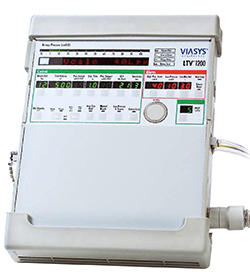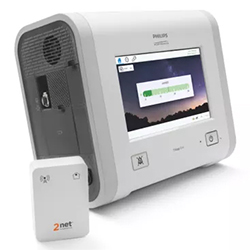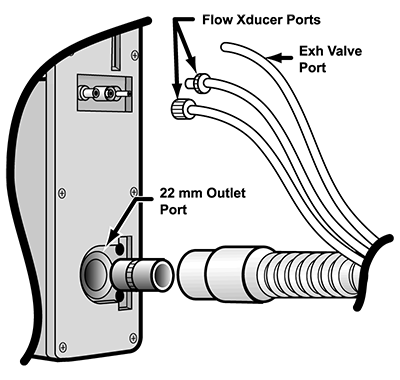Ventilator
Some children need help breathing with mechanical ventilation. This means using a ventilator (breathing machine) that can move air in and out of your child’s lungs. This is used when your child cannot breathe well enough on their own. Your child may need continuous ventilation (24 hours per day) or ventilation for only part of the day (for example, only at night).
Types of Ventilators
 Astral Home Ventilator
Astral Home Ventilator
The Astral device provides mechanical ventilation to both ventilation dependent and non-dependent patients. It delivers pressure and volume ventilation through either a valve or leak circuit, and is compatible with a range of accessories to support specific use cases.
 LTV Series Ventilators
LTV Series Ventilators
The LTV® 1150 ventilator is intended to provide continuous or intermittent ventilatory support for the care of the individuals who require mechanical ventilation.
Trilogy Ventilator
 Trilogy EVO © provides ventilator support with added sensitivity, with volume and pressure modes. EtCO2 monitoring and alarms of every parameter allow for adaptable care.
Trilogy EVO © provides ventilator support with added sensitivity, with volume and pressure modes. EtCO2 monitoring and alarms of every parameter allow for adaptable care.
- Ventilator Alarms and Settings
- Suctioning While on a Ventilator
- Nebulizer Treatments
- Emergency/Disaster Preparedness Plan
 Things to Know About Using a Ventilator at Home
Things to Know About Using a Ventilator at Home
- It is important that you change the position of your child’s ventilator tubing to prevent injury to the trach stoma. You can change which direction it is laying across the chest. The trach tubing is heavy so be sure it is not pulling on the trach. You can clip the tubing in place to prevent pulling.
- Your ventilator will have a heated humidifier system that is part of the ventilator circuit. This provides warmth and humidification to the airway. Be sure to check the level of sterile water in the humidifier chamber to be sure it does not run out of water. Lack of humidification can cause thick mucus and increase the chance of the trach plugging.
- When you travel with your ventilator you will use a “dry circuit.” This means you use a humid vent placed into the circuit rather than using the inline humidification with water. This ensures that your child still gets humidification while traveling.
- You will change your ventilator circuit and Ballard suction catheter once weekly. When changing ventilator circuit, you should have another trained person bag ventilate your child while you change the circuit. This ensures that your child does not have too long of a pause in their breathing. The picture shows how to attach the ventilator circuit. Your child’s vendor will teach you more on this.